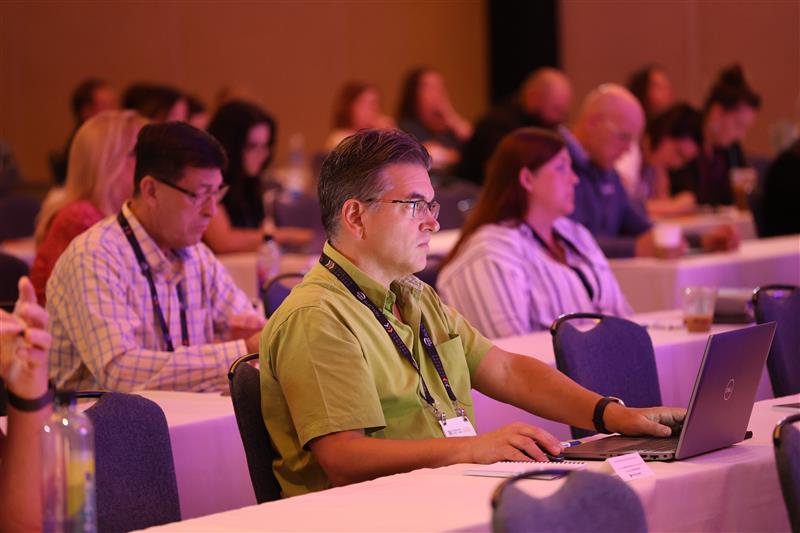By Megan Tanel, AEM President —
Picture one of your best employees. Maybe it is someone who regularly drives positive outcomes, works to improve processes, or consistently supports others.
The person’s ability to play a part in the success of your organization is potentially shaped by so many varied factors – skills, experiences, personality traits, environmental factors, physical characteristics, personal branding choices, and more. The combination of all these factors is what makes the employee uniquely valuable to your organization.
Now imagine you want to task the person with teaming up with a fellow employee on an important project. Would you pair the star employee up with someone who possesses similar traits, characteristics, and viewpoints? Or would you connect the person with another employee capable of approaching the project armed with different skills and a unique perspective?
Putting a team, department, committee, or taskforce together and having it comprised of two or more people who look, talk, act, and think the same way benefits no one. Our differences make us stronger, more versatile, and more adaptable to change.
The statistics suggest we can – and very much need to – do better at growing our workforce and encouraging people from all walks of life to join our industry to help it grow and succeed. Manufacturing as a whole lost 1.4 million jobs during the COVID-19 pandemic, and the industry is expected to see 2.1 million jobs go unfulfilled by 2030. Last year, 8.87 million jobs were available in the U.S., with just 4.41 million unemployed people available to do the work.
We recognize the problem. Now, we must continue to do what we can to fix it. While we have made some headway in recent years as it relates to diversity, equity, and inclusion in our industry, it is not nearly enough to close the ever-widening skills gap that continues to plague equipment manufacturing.
There is no overstating the importance of seeking out greater levels of diversity as it relates to age, race, gender, ability, and thought (to name a few) in equipment manufacturing. Differences should not only be accepted, but also encouraged. They allow us to better connect with one another, they foster greater creativity and innovation, they force us to overcome both implicit and explicit bias, and they lead to greater levels of personal and professional growth.
It is also critically important for our industry to think less about how the individuality of our employees reflects on our brands, and more about how diversity, equity, and inclusion can act as tools for us to close the skills gap in our industry. As leaders of people, we should not expect everyone to look, dress, act, or think the same as us.
We need to rethink what is acceptable or considered appropriate in the workplace. What is it that is holding us back from hiring certain people? Is it a piercing most of us would not consider for ourselves? What about a visible tattoo, unconventional hair color, or unique outfit?
We all have biases that influence us, and their impact can be significant. But when our biases are based on unfounded or archaic “truths,” we open ourselves up to unwelcome organizational consequences. In addition, thinking of DE&I strictly from a race or gender standpoint – and failing to recognize bias as it relates to lifestyle, dress, hair color, piercings, tattoos, and more – is allowing yourself to take the path of least resistance when it comes to bringing about greater levels of DE&I within your organization.
We can do better, and we should do better. Leverage your curiosity to serve as a strong antidote to bias. Open yourself to new levels of understanding. And above all else, encourage the current and future workforce in our industry to bring their authentic selves to work and feel comfortable knowing they won’t be met with bias, ridicule, or discrimination. Because as J. Irwin Miller, founder of AEM member company Cummins once said, “When we indulge ourselves in such irrational prejudices, we damage ourselves most of all and ultimately assure ourselves of failure in competition with those more open and less biased.”
If our industry wants to grow, and we want to attract, engage, and retain a workforce capable of supporting a bright future for equipment manufacturing, the time is now to welcome all types of diversity in its many forms. From the factory floor to corporate offices at all levels, leaders of people should welcome, make space for, and advance all types of people.
The numbers say we still have a lot of work ahead of us. I’m convinced we can succeed – not only because it is the right thing to do – but because we cannot afford to lose out on the opportunity to build a talented and diverse workforce capable of helping ensure a bright future for our industry.
Subscribe to the AEM Industry Advisor for more perspectives from AEM staff.





